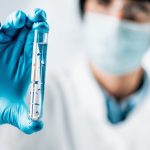SHOCKING: Researchers find microplastics in human blood samples
 (NaturalHealth365) Plastics are everywhere in our environment. They are a convenient and cost-effective way to transport and store food if they are recycled and taken care of properly. The trouble is, when plastics aren’t handled properly, they can become pollutants that contaminate our environment and infiltrate our bodies in a variety of ways.
(NaturalHealth365) Plastics are everywhere in our environment. They are a convenient and cost-effective way to transport and store food if they are recycled and taken care of properly. The trouble is, when plastics aren’t handled properly, they can become pollutants that contaminate our environment and infiltrate our bodies in a variety of ways.
Shockingly, a recently published breakthrough study performed in the Netherlands found microparticles in human blood. In addition, researchers also identified the different ways tiny plastic particles can inflict harm on the body as they flow through our bloodstreams.
What are microplastics, and how do you get exposed to them?
Microplastics are very tiny pieces of plastic. They are normally smaller than five millimeters in length and come from several different sources, ranging from microbeads found in makeup and other beauty products as well as large pieces of plastic debris that are degrading into smaller and smaller pieces.
You may not realize it, but many toothpaste brands and facial cleansers are also known to have tiny pieces of plastic in them.
Scientists identify various types of microplastics in study participants’ blood samples
The newly published study revealed some alarming findings. In the analyzed blood samples, researchers discovered four key types of microplastics, along with many other contaminates. They included:
- PET – polyethylene terephthalate (food containers, beverage, and water bottles)
- PE – polyethylene (Saran wrap, baggies, storage bags)
- Polymers of styrene
- PMMA – polymethyl methacrylate (dental implants, nail resin/epoxy, and eye implants)
More research is underway to determine whether microplastic concentrations vary in different parts of the body. Is it possible for the insidious particles to adversely affect our brain, digestive systems, and other vital organs and may even contribute to cancer development?
Simple ways to limit your exposure to these tiny plastic particles
Microplastics have been found in blood samples collected from adults and fecal samples collected from infants. What is so disturbing is that the fecal samples from infants showed, in some cases, ten times more microplastics than the amount found in the blood samples taken from adults. Undoubtedly, we are dealing with a pervasive issue, and the magnitude of the problem can no longer be ignored.
With plastic found in almost everything we buy, it can be challenging to find ways to avoid coming in contact with the material. We live in a convenience-oriented society, and plastics make things more convenient. So how do we learn to live without them?
While it may take a bit of adjustment, creating new, “plastic-free” lifestyle habits is a reasonable first step. Start by storing food in glass containers instead of plastic ones and avoid using plastics in your health and beauty products. Next, consider purchasing a quality glass or stainless-steel water bottle and let go of plastic water bottles.
In addition, vacuum at least once a week to reduce your exposure to dust, which can trap microplastics and put your airways in harm’s way. Make no mistake about it, air pollution is quite dangerous to your health … so, consider investing in a good quality air purification system for your home and office.
While these steps may not completely eliminate the problem, they will greatly reduce our exposure to toxic microplastics.



